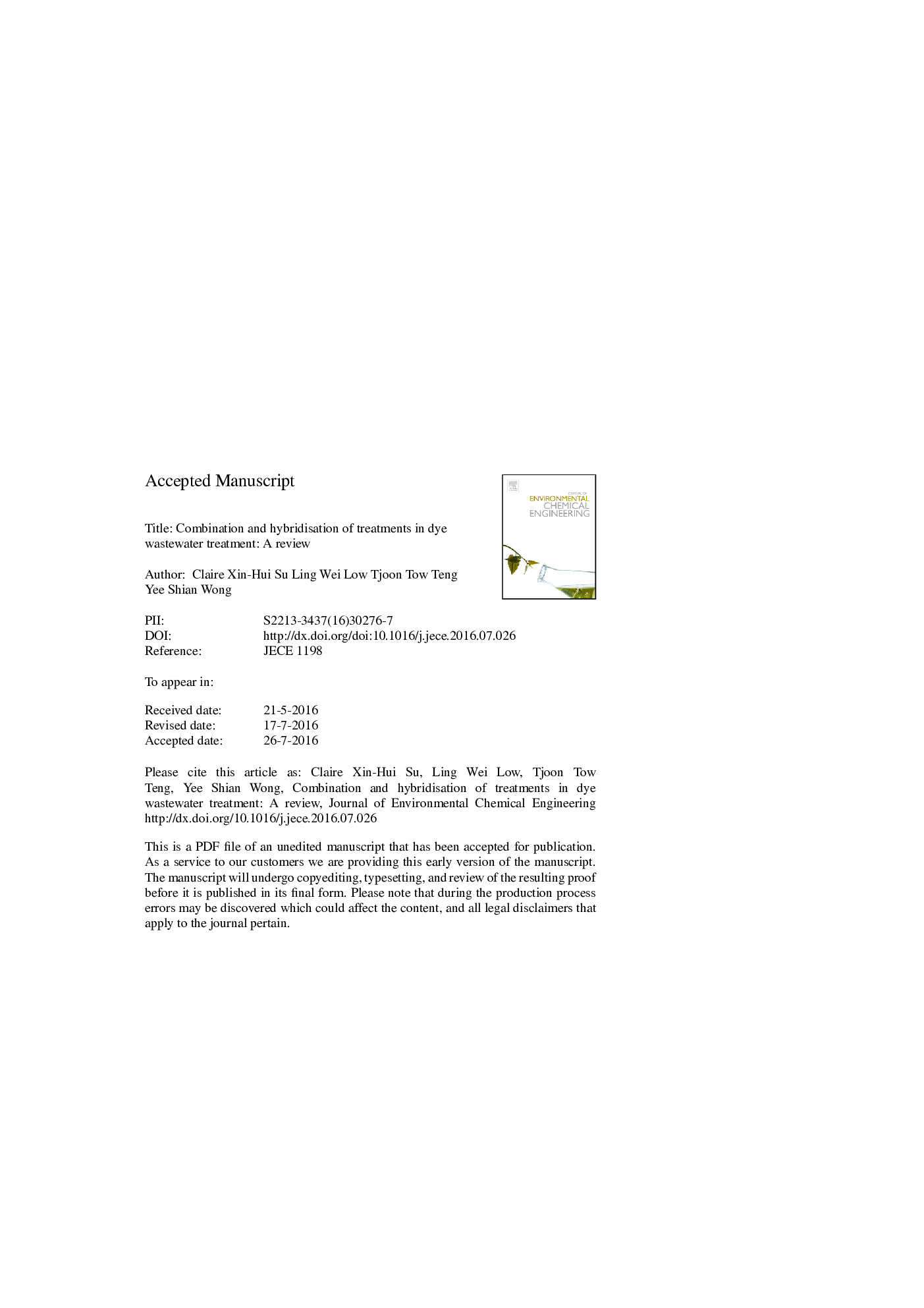| Article ID | Journal | Published Year | Pages | File Type |
|---|---|---|---|---|
| 10997940 | Journal of Environmental Chemical Engineering | 2016 | 46 Pages |
Abstract
The complex and recalcitrant nature of dyes makes a single treatment method inadequate for the removal of dyes from industrial wastewater. Over the years, many researchers have studied the use of combined treatment methods to improve the efficiency of treatment processes to meet the increasingly stringent laws and regulations related to wastewater discharge. However, the successive operation of the treatment methods could be complex and time consuming. To further improve the treatment processes of dye wastewaters, hybrid processes, which integrate multiple treatment processes into a single process, have garnered considerable attention and are being developed. Although hybrid processes have been researched on by several researchers previously, there are some who classify hybrid processes as combined processes. Therefore, the present review specifically classifies combined processes and hybrid processes into their respective categories, together with their advantages, disadvantages and prospects. In addition to hybrid processes, the development of hybrid materials for the enhancement of treatment process has also been studied by many researchers. This development has also brought about the need to review the different methods of preparation of these materials to understand the structure and characteristics of the material for optimal efficiency in addition to their uses.
Related Topics
Physical Sciences and Engineering
Chemical Engineering
Chemical Engineering (General)
Authors
Claire Xin-Hui Su, Ling Wei Low, Tjoon Tow Teng, Yee Shian Wong,
